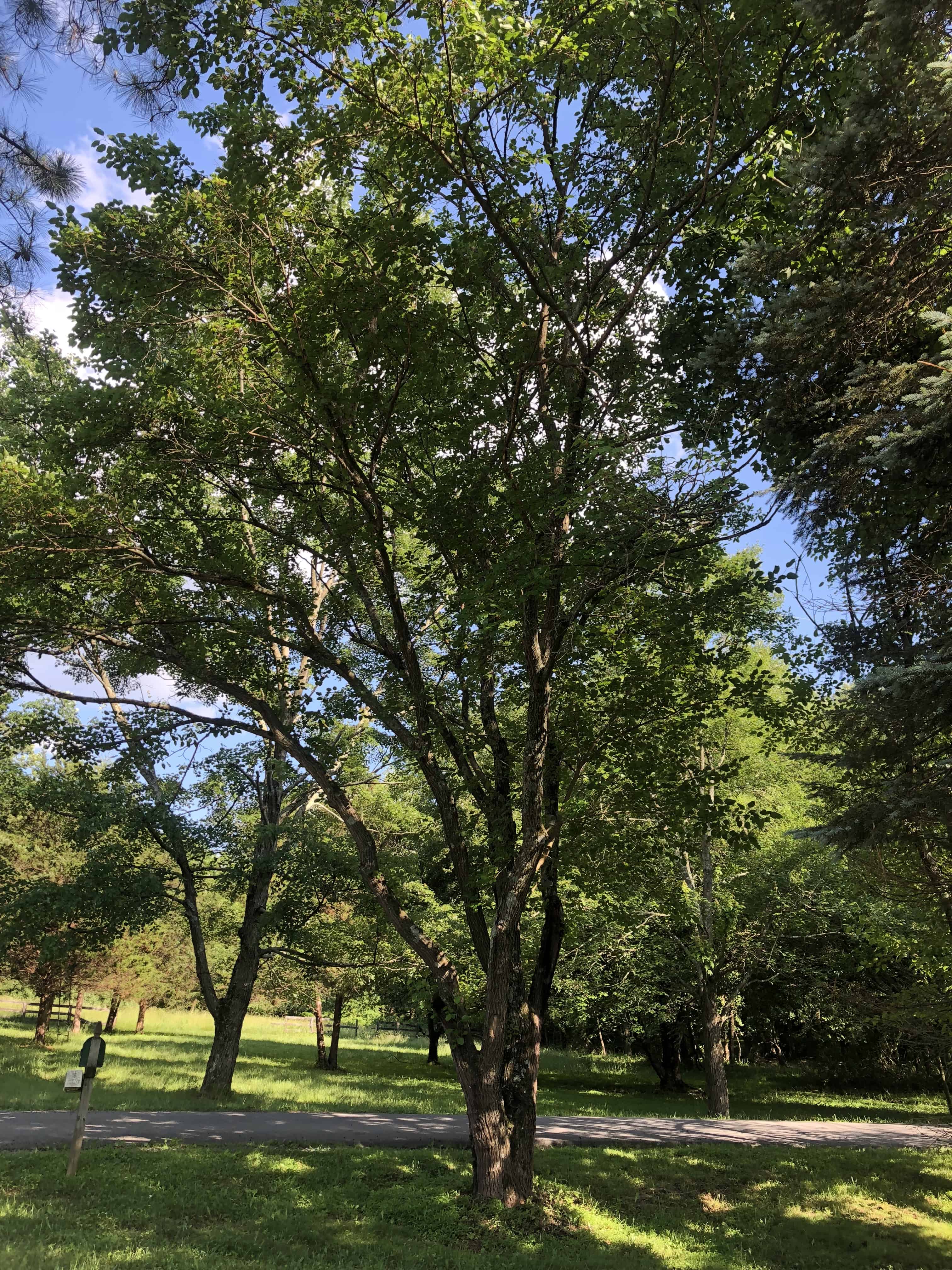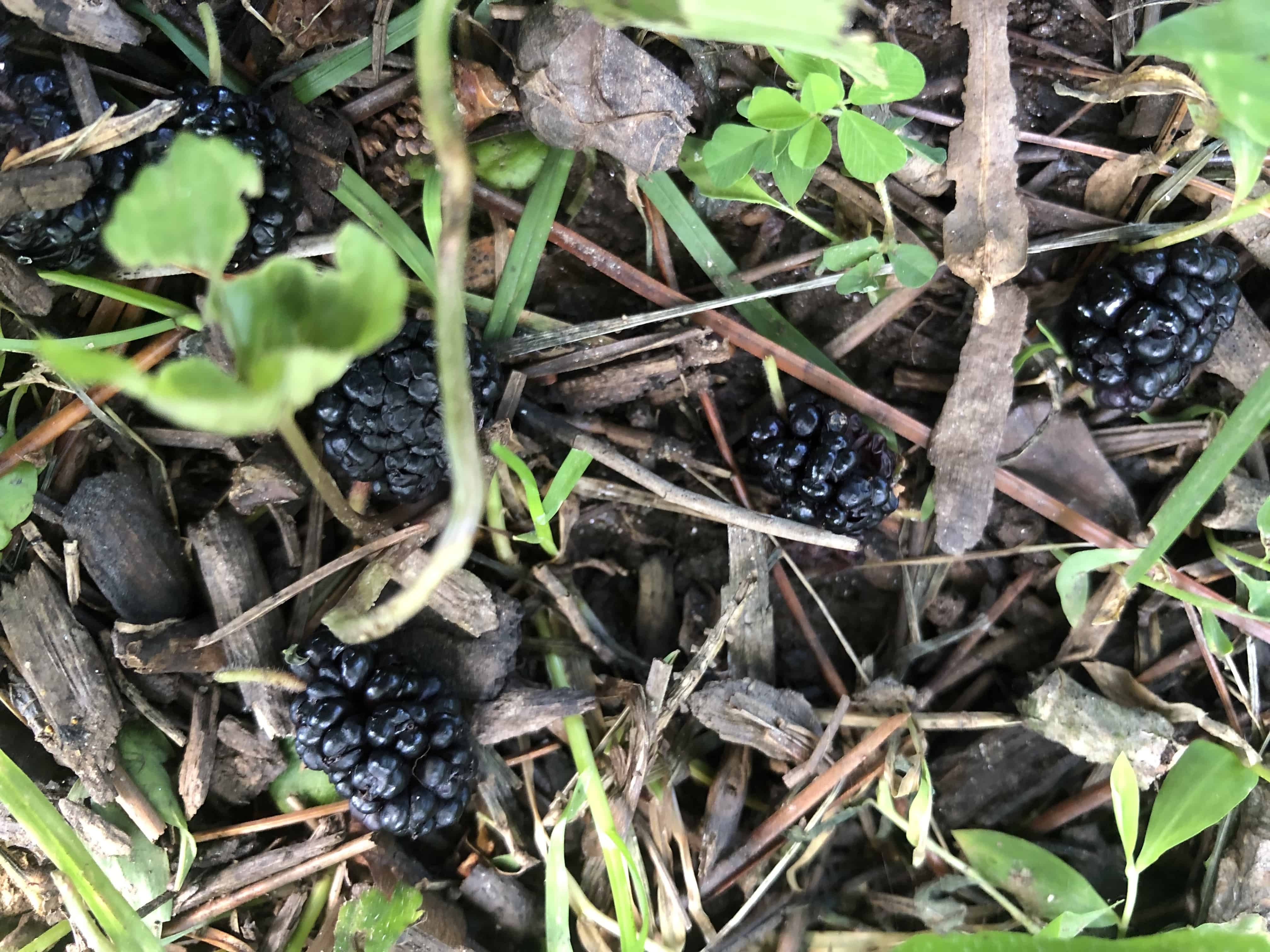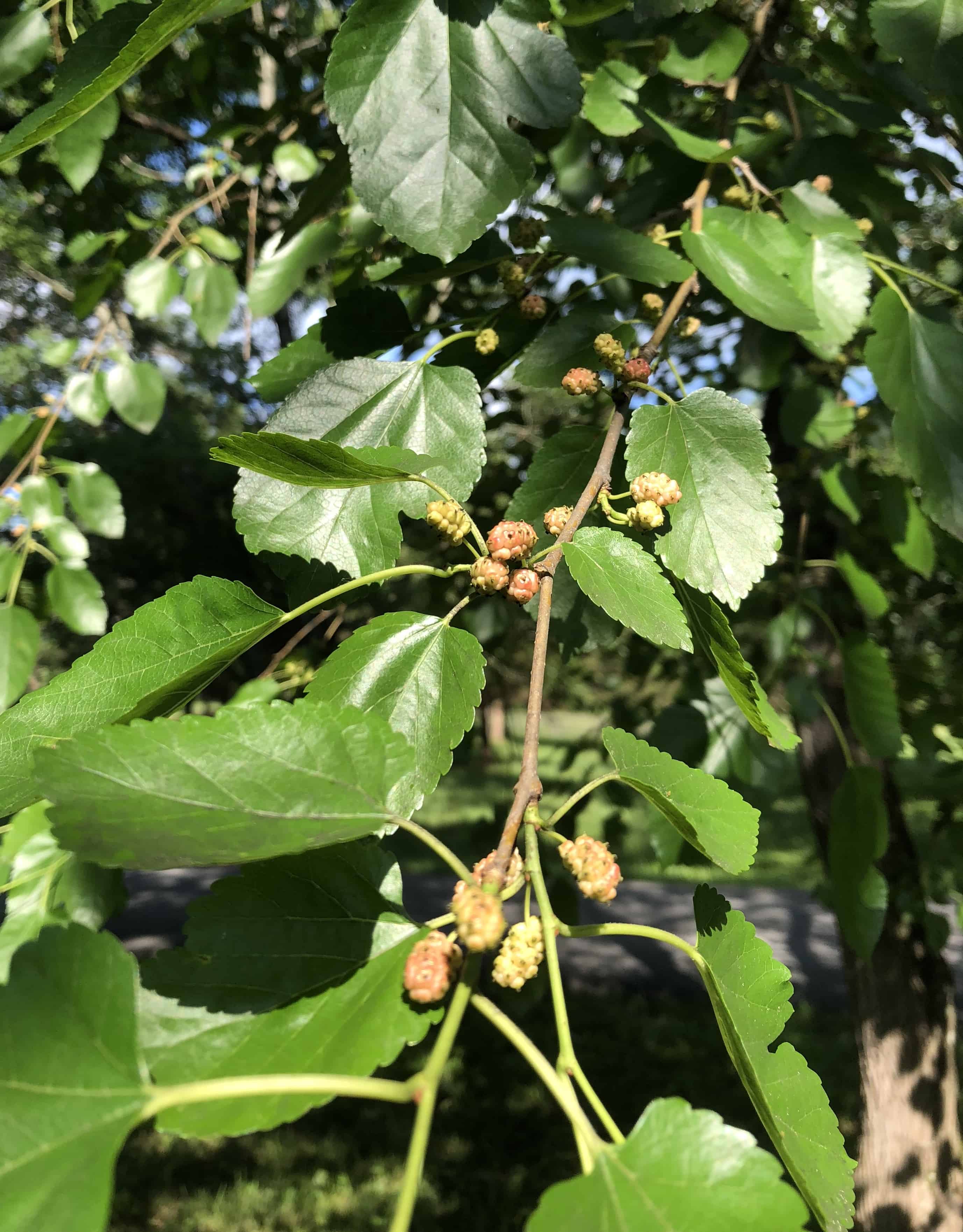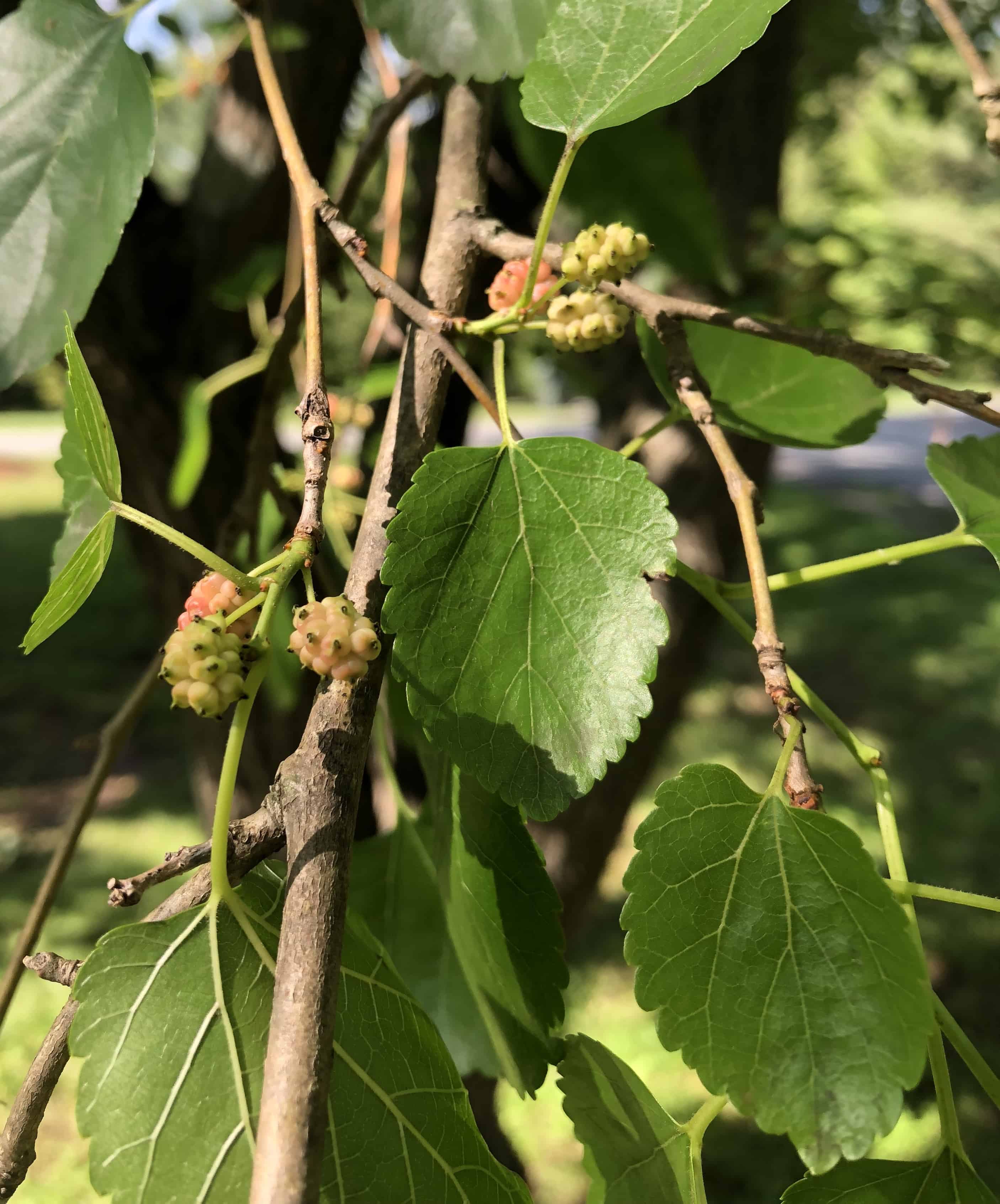Mulberry Trees
Do you have one of these wirey trees that you probably never notice until this time of year? They are fast growing, relatively nondescript, and drop the purple berries that look a little like a shriveled blackberry? If so, you are lucky enough to have a Mulberry tree in your yard!
Genus & Family
They are from the genus Morus and the family Moraceae.
The family includes fig trees as well as Osage-orange.

It's not really a berry
Just to be technically correct, the fruit look like berries, but are really a collective fruit. A collective fruit is a fruit formed from a mass of flowers. Another collective fruit is a pineapple. For the sake of this discussion, I am going to call them berries.

The good the bad & the ugly..........
The good thing about Mulberry trees is that they grow quickly, so they can be a quick fix if you need some shade. They may need trimming periodically, but that gives you the option to shape them to their growing area. They produce edible berries that start out red, then turn dark purple as they mature. Mulberries are high in iron, vitamin C & K, potassium, phosphorous, calcium, a host of phytonutrients, reservation, lutein, polyphenolic compounds, and zeaxanthin. In short, they are good for you. They can be eaten right from the tree, dried, or frozen. They can be substituted in almost any recipe that calls for blackberries or blueberries.
The bad things about Mulberry trees is that the berries can stain, the trees grow like weeds, birds disperse the seeds quickly so they can grow in unwanted areas, and they produce a lot of pollen.

Overall Mulberry trees are a good thing!
Next time you see some purple berries on the ground, if you are sure they are mulberries, try one. Although not commonly planted for landscaping, they can be a nice addition to your yard. They provide berries for the birds and for you.
References:
https://www.crfg.org/pubs/ff/mulberry.html
www.onegreenplanet.org/lifestyle/reasons-you-should-plant-a-mulberry-tree/
https://www.organicfacts.net › Fruits
